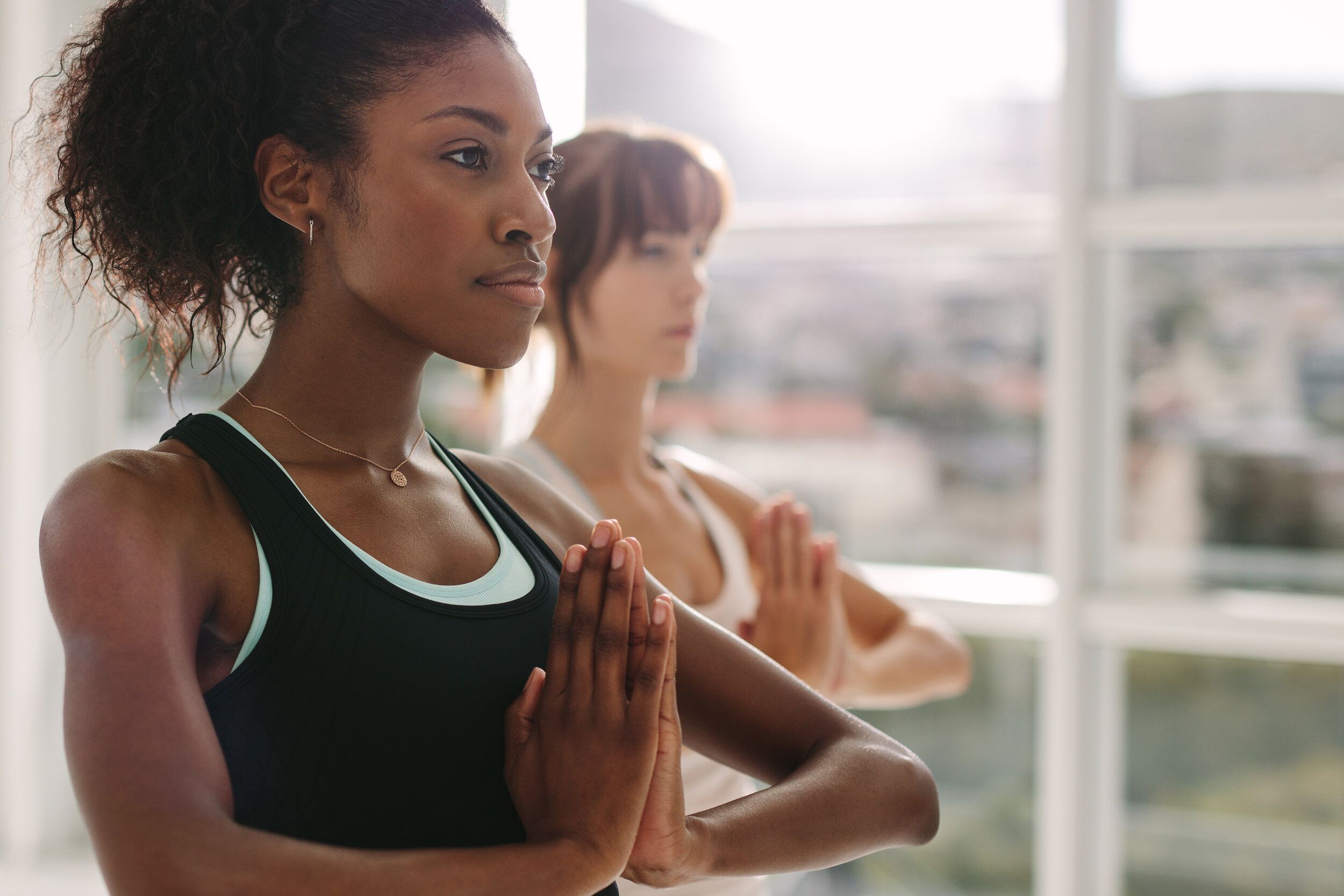The Basics of Ayurveda

The 5 elements, Doshas, the relation to Yoga, and more.
Ayurveda & Canadian Allopathic Medicine
In 2020, the bridge between Allopathic medicine (Western medicine) and alternative wellness systems such as Ayurveda is built of communication, openness and understanding.
An increasing number of Allopathic professionals are seeing the benefits of qualified and professional Ayurvedic care, supporting the wellness of their patients in areas such as:
lifestyle choices & time management
stress management & relaxation techniques
sleep quality
food & drink choices
exercise, stretching, increased movement & flexibility
monitoring bodily functions & symptoms
emotional release techniques
and more.
An important difference remains that Ayurvedic Wellness practitioners in Canada do not diagnose. They aim to balance the elements that are out of balance in an individual. Diagnosis, prevention and monitoring remain in the care of qualified Allopathic professionals. Alternative practices support the individual and their needs. It is important to highlight that in the Canadian health system, Canadian Allopathic medicine is the principal medical practice and other practices are considered alternative or complementary. Allopathic doctors treat patients, any alternative care practitioner cares for clients, for both physical and mental wellness.
The Vaidyas of India are recognized as Ayurvedic Wellness practitioners or consultants in Canada.
The Practice of Ayurveda
The practice of Ayurveda is built on coordinating different Ayurvedic professionals for different aspects of the treatment process. The first stage begins at meeting with an Vaidya, Ayurvedic Wellness Practitioner or Ayurvedic Consultant who evaluates the client and designs the best Ayurvedic tools to address the doshic imbalances of the client. The suggested plan includes Ayuvedic treatments, food and drink changes, herbs and spices, breathing (pranayama), physical activity which could include Yoga asanas and more. The therapies are performed by specialized Ayurvedic therapists fully trained in the theories of the practice, ensuring that the targets of the suggested plan are met.
12 Steps to Ayurveda
If you are new to Ayurveda, here are 12 steps introduce you to":
1) Attributes
Understanding Ayurveda is as simple as understanding the concept of attributes and opposites. Whatever way we describe a symptom and imbalance, we carefully balance it out with the opposite.
2) 5 Elements
Vedic thinkers observed that there were 5 elements inthe world around us as well as within us to be observed and balanced. These elements also come together to make up the 3 Doshas: Ether and Air create Vata, Fire and Water create Pitta, Water and Earth create Kapha.
Any increase or decrease of these elements affect us.
3) 3 Doshas
Doshas are perhaps the most known principle of Ayurveda. The 3 Doshas are Vata, Pitta and Kapha.
The doshic balance we are born with and the balance we are living today often don’t match. This is how we become out of balance.
Through understanding our Doshas, both our original blend and our current blend allow us to live in line with ourselves with attention and compassion.
Systems of Symptoms
There are several ways that an Ayurvedic Wellness practitioner sorts the symptoms of an individual. The assessment is done though Ayurvedic observation techniques such as tongue and eye observation, pulse and more. The practice of Ayurveda has outlined that there are several systems of symptoms that are required to master in order to assess the state of wellness of an individual, and in finding the most appropriate way to address the issues at hand. As you reflect on the systems of symptoms, it is important to overlap them one over the other and consider them as both a whole and as separate layers.
4) Sub-Doshas
Ayuvedic Wellness practitioners understand the human system as having 15 sub-doshas which are divided by the 3 Doshas and 5 elements. Each of these is responsible for a different part or function of the human body.
Any imbalance will affect the other Doshas, especially those present in the sub-doshas in question just like any imbalance in a sub-doshas often relates to the other sub-doshas of the same dosha and affects them.
5) Dhatus
The simple definition of Dhatus is that they are interconnected levels of tissues which are operating the systems of the body.
There are 7 recognized Dhatus.
This is the only Ayurvedic system of symptoms recognized and mirrored in Allopathic medicine.
6) Srotas
The literal meaning of the word Srota is “body channel” which is the Ayurvedic circulation method in the body. Ayurveda considers these channels present throughout the entire body and in every living thing - visible and invisible.
The Srotas carry substances in and out of the body.
These are some of the Ayurvedic systems of symptoms. To know more, about these are others, your Ayurvedic professional can introduce you to the different systems. Working to balance any of the systems of symptoms requires a qualified Ayurvedic Wellness practitioner, consultant or Vaidya.
Daily practices
Living Ayurvedically is to embrace living in the rhythm of nature as well as living within our own personal harmony. To best do this, we need to know our personal basics to enhance the best of ourselves and develop a kit of practices to use to maintain balance.
4) Breathing & Meditation
Breathing is something we do automatically, without thinking. But breathing with intention, fully and using vedic techniques brings us benefits such as stress reduction, improved sleep quality, quieter mind and so much more.
Meditation is the practice of learning to tame our minds and allowing our mind to process and heal from our days.
Learning the best practice of breathing and meditation for you is a way to help yourself daily.
8) Self-Massage
Our body is complex. It deserves and needs daily attention. By learning and practicing our tailored self-massage you address your specific doshic needs, improve blood and lymph circulation and reduce tension.
From the Ayurvedic perspective, a daily practice of self-massage is an important connection to ourselves and direct our own great energy to ourselves.
9) Yoga
Yoga is more than the exercise postures, it is an entire lifestyle. Learning the best postures for you and being introduced to the practice of Yoga that fit with your needs can help add another facet to your wellbeing.
Caring for ourselves is the best thing we can do for ourselves.
Food, drink, oils, herbs & spices
Ayurvedic living is as possible as a walk to a grocery store. By knowing our doshic balance, we can make daily choices that truly make a difference in how our body works and feels, how we feel mentally and emotionally, as well as spiritually. By knowing what best works for us,
10) Foods & Drinks
According to Ayurveda, we can help ourselves by our choices in food and drinks is based on 6 Ayurvedic tastes, the time of the day and seasons., making choices based on our doshic needs. We can make simple adjustments that make our bodies work better, assimilate better and digest well, thereby improving our energy and bodily functions.
11) Oils
Skin is considered the largest organ in the body. What we put on our skin gets taken in by our system. Oils are one of the most known parts of a true Abhyanga massage. The right oil for the person and their doshic needs can help balance the imbalanced constitution from another source.
12) Herbs & Spices
Ayurveda is known for its celebration of herbs and spices. Besides the typical Ayurvedic herbs, there are herbs and spices easily available in any grocery store that follow the principles of Ayurveda and can be added to daily foods to help balance our constitutions.
One of the most important aspects of Ayurvedic living is understanding one’s digestion, this is called Agni. Respecting and enhancing our Agni is paramount to wellness.
More
13) Chakras
One of the most popular parts of Ayurveda and Yoga are Chakras. From the Vedic perspective, these 7 energetic centers in the body need to flow for us to feel our best.
We can address our Chakras during treatments such as Abhyanga massages as well as during meditations and Yoga.
Learning how we can address our Chakras for ourselves is a great way of bringing wellness to ourselves every day.
14) Mudras
Mudras are hand and finger positions that are believed, in Vedic philosophy, to be additional ways to bring on benefit to ourselves with intention.
Learning a variety of mudras to use that correspond to our wellness path is an easy aspect to add to our regular routine to care for ourselves.
15) Elimination
Elimination may not be the most popular topic, but it is necessary to the function of our body as well as our mind and soul.
By ensuring that we are eliminating properly, we are establishing the very first step to be able to intake, be it in food for the body, as impressions for the mind.
Learning to eliminate what is no longer needed for our mind and soul is an important aspect of our meditation process.
By learning and taking the time to truly know ourselves, we allow ourselves to be the very best version of ourselves every day and for our future. Ayurvedic consultations and learning our personal daily Ayurvedic routine to bring wellness to ourselves every day are worthwhile and direct connections to delving into perhaps the most important aspect of our lives: ourselves and our wellbeing.

Wellness is possible.
Feeling great is possible.
Ayurveda is here to bring you there.















